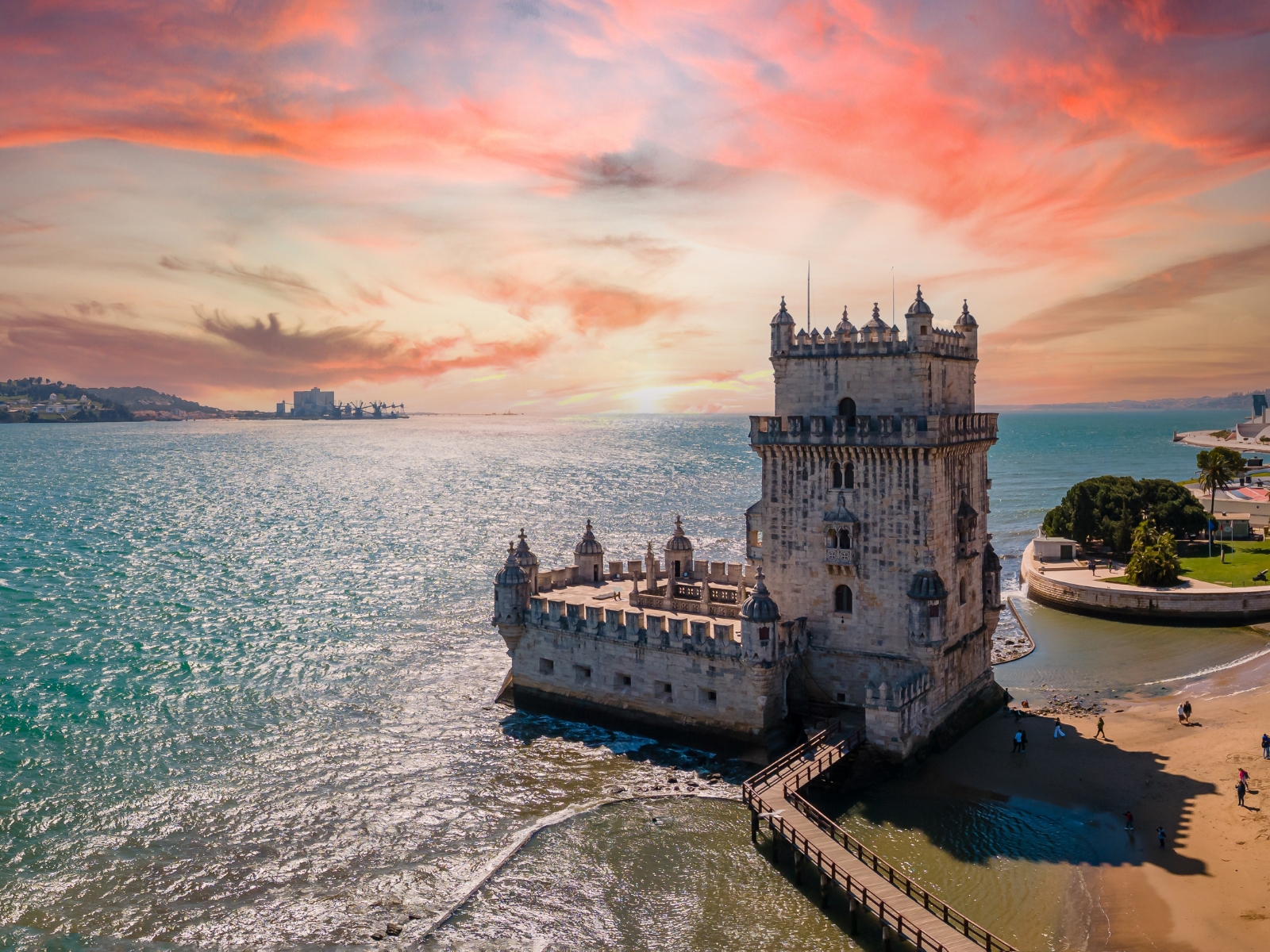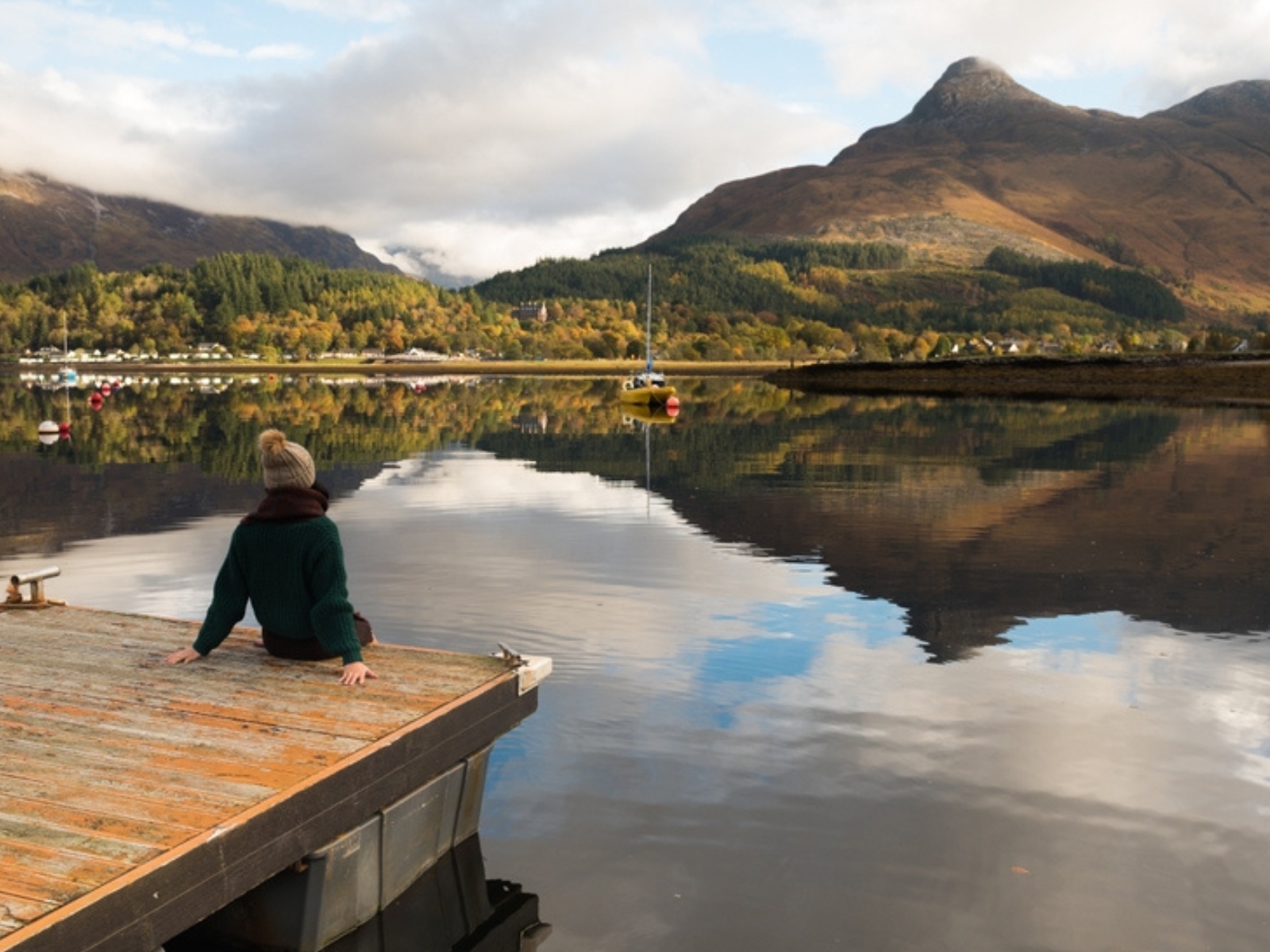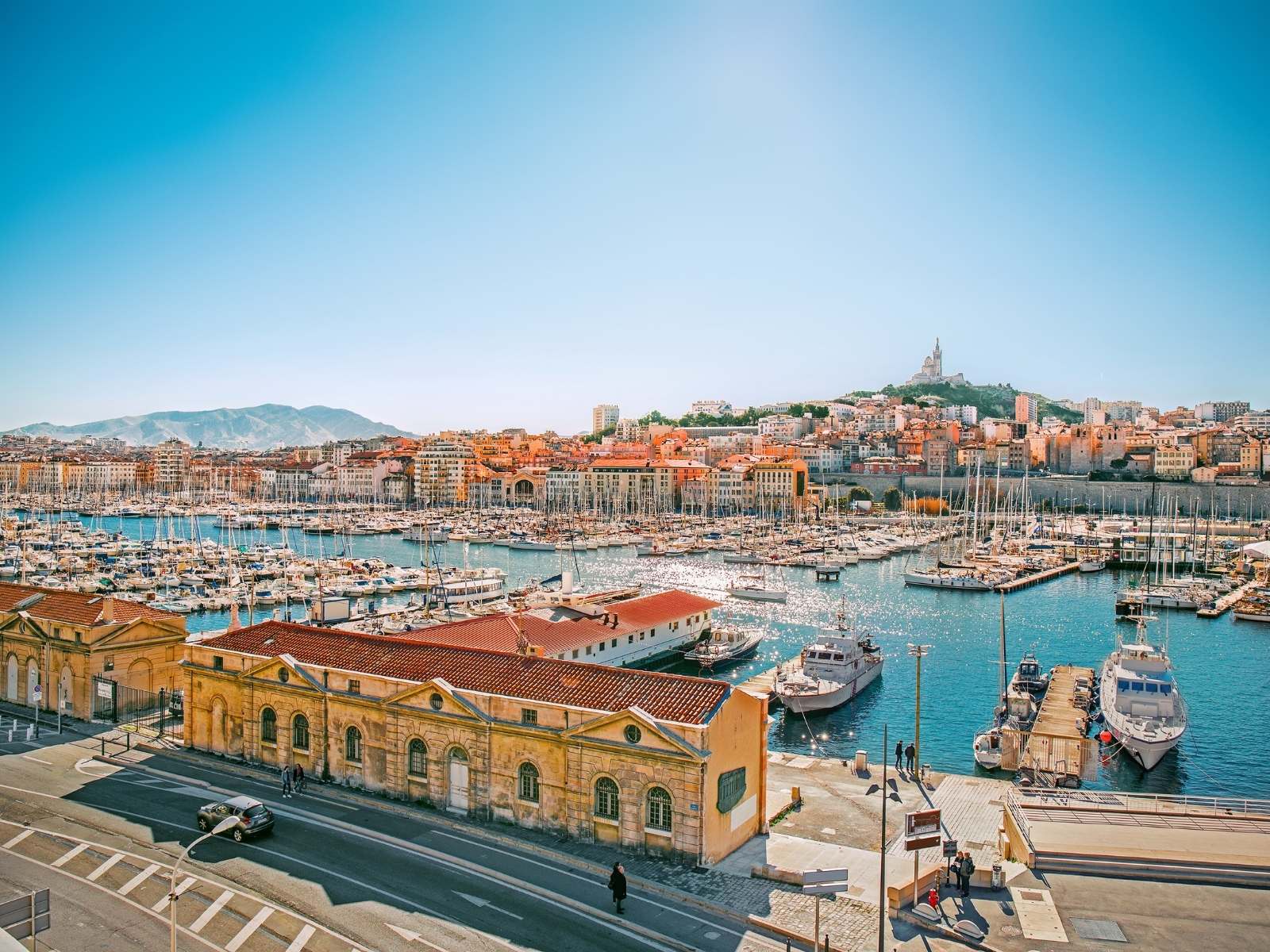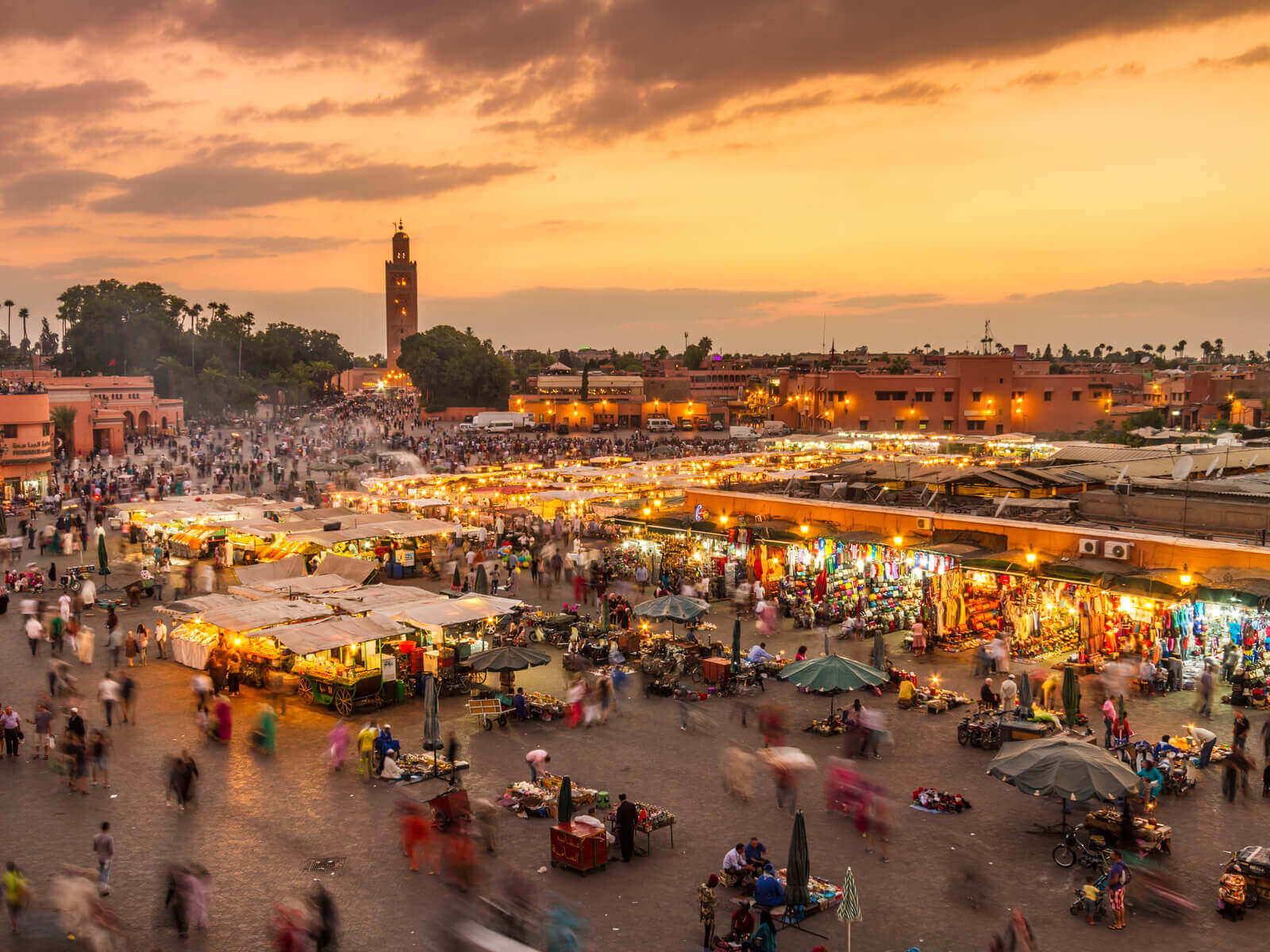Portugal, a country rich in culture, history and breathtaking landscapes, unfolds its full splendor in March. But what is the weather like in Portugal in March? Temperatures are pleasantly mild, depending on the region you can expect 16-20°C. Ideal for travelers who want to experience the country in all its beauty.
These destinations you shouldn't miss in Portugal in March
- Sintra, Portugal
- Lisbon, Portugal
- Braga, Portugal
- Porto, Portugal
- Aveiro, Portugal
- Algarve, Portugal
- Guimarães, Portugal
1. Sintra - Discover the fairytale city
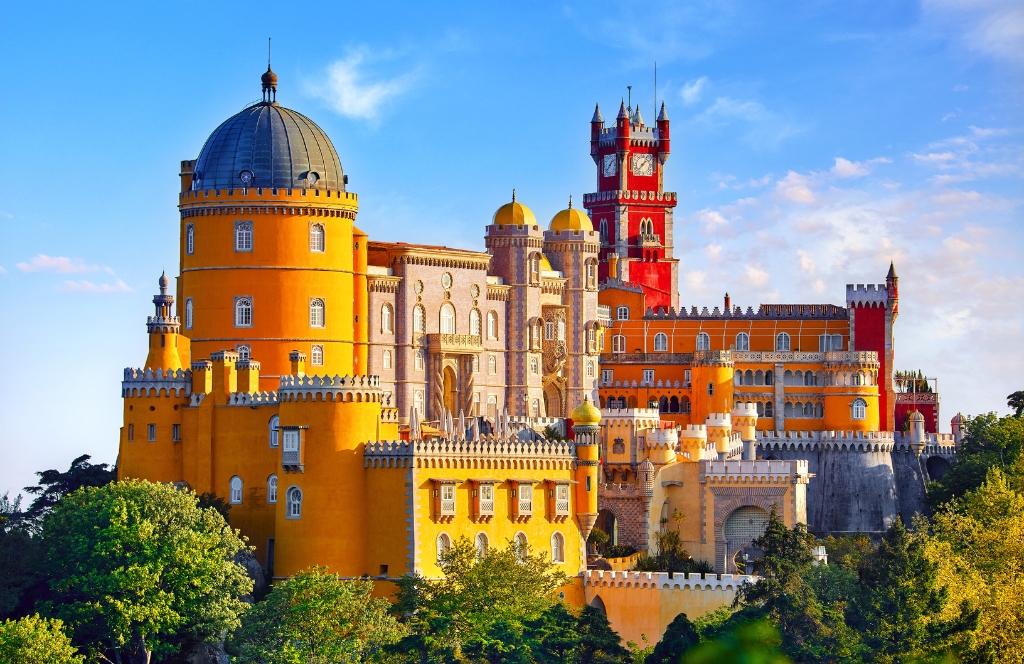
Sintra, just a short drive from Lisbon, is a true fairyland. The town is surrounded by dense forests and majestic hills that create a magical atmosphere. In March, when the flowers start to bloom, Sintra is particularly beautiful. But where exactly is Sintra? The small town is located in the west of Portugal. It officially belongs to the district of Lisbon and is located around 30 km northwest of the capital.
Sintra sights
Visitors can visit the famous Pena Palace, a colorful masterpiece of romantic architecture that towers high above the city. The Moorish castle of Sintra, Castelo dos Mouros, with its impressive ruins and breathtaking views of the surrounding area, is another must-see. Parques de Sintra is a public foundation in Portugal responsible for the conservation and restoration of several historical parks and palaces in the Sintra region. These include world-famous sights such as the Palácio Nacional de Sintra, the Palácio Nacional da Pena and the Palácio de Monserrate, which attract thousands of visitors from all over the world every year.
For nature lovers, the nearby Sintra-Cascais Nature Park offers a variety of beautiful hiking trails that wind through an impressive and diverse landscape. These paths lead through dense forests, along dramatic cliffs and offer stunning views of the sea.
Particularly noteworthy are the hiking trail along the coast of Cabo da Roca, the westernmost point of mainland Europe, as well as the routes that lead through the mystical forests of the Sintra Mountains, known for their lush vegetation and fairytale atmosphere. Many of these trails also connect historical sites such as castles and palaces, giving walkers the opportunity to combine cultural heritage with natural beauty.
Other possible activities in Sintra
In Sintra's old town, visitors can stroll through charming alleyways, sample local delicacies and purchase artisanal souvenirs. The nearby Sintra beach, Praia da Adraga, is a hidden gem with its golden sands and dramatic cliffs, perfect for a relaxing afternoon.
2 Lisbon - The vibrant capital
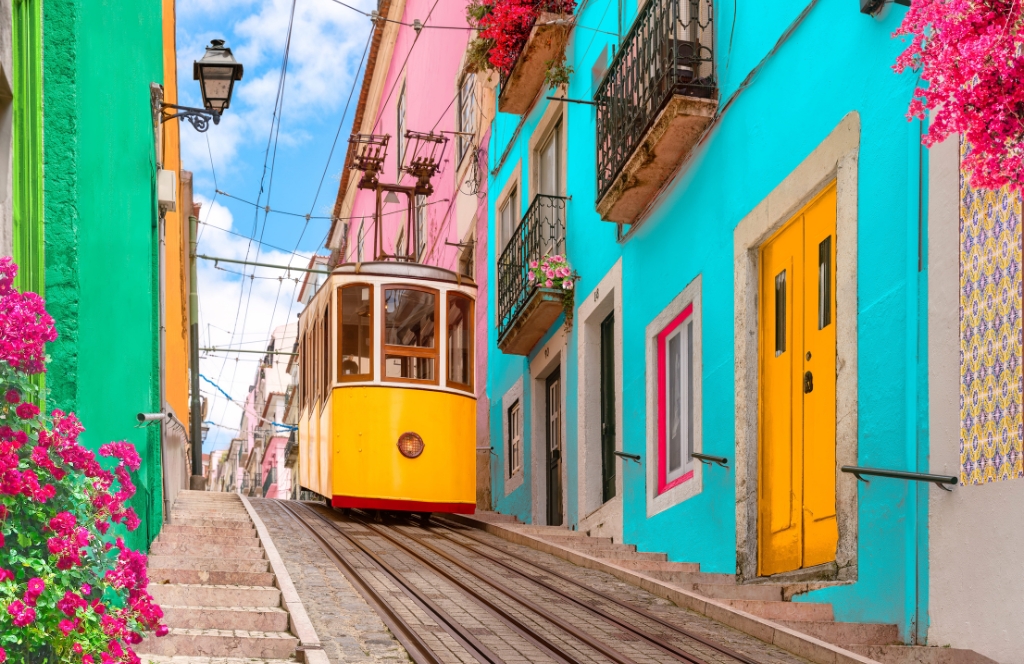
Lisbon, the hilly capital by the sea, is a melting pot of old and new culture. The city is known for its historic neighborhoods, such as Alfama and Bairro Alto, where traditional life is still palpable. Lisbon is located near the Atlantic coast in western Portugal, on a bay on the northern bank of the Tejo estuary.
What you have to see in Lisbon
A walk along the waterfront reveals Lisbon's famous bridge, the imposing Ponte 25 de Abril, which is reminiscent of the Golden Gate Bridge. Visitors should also take the time to try the famous Pastéis de Belém, a local pastry that is best enjoyed fresh and warm.
There are numerous viewpoints (miradouros) in Lisbon from which you can enjoy a magnificent view over the city and the Tagus. The Miradouro de Santa Luzia and the Miradouro da Senhora do Monte offer particularly impressive views.
During your Lisbon vacation, numerous viewpoints (miradouros) offer a magnificent view over the city and the Tagus River. The Miradouro de Santa Luzia, known for its walls decorated with azulejos and the lush garden, offers a picturesque view of the old town and the river. The Miradouro da Senhora do Monte, one of the highest points in the city, offers a breathtaking view and is particularly popular at sunset.
Also discover the following highlights in Lisbon:
- Torre de Belém: This UNESCO World Heritage Site on the banks of the Tagus is a symbolic landmark of Lisbon's maritime history.
- Mosteiro dos Jerónimos: Another UNESCO World Heritage Site, this impressive monastery is a masterpiece of Manueline architecture.
- Tram 28: A ride on the historic streetcar line 28 offers a charming way to explore the narrow streets and steep hills of the old town.
- Bairro Alto and Chiado: These neighborhoods are known for their lively nightlife, historic cafés and diverse shopping opportunities.</li
- Alfama: Lisbon's oldest district, famous for its winding alleyways, traditional fado houses and the Castelo de São Jorge, a Moorish castle with breathtaking views.
- Praça do Comércio: One of the largest and most impressive squares in Europe, surrounded by yellow pombaline buildings and open to the Tagus
- .
Is there a beach in Lisbon?
Lisbon itself does not have a beach. However, the beaches near Lisbon offer a perfect blend of natural beauty and relaxed lifestyle, ideal for those seeking sun, sea and sand. Popular beaches such as Cascais and Estoril are easily accessible by train and offer charming promenades, restaurants and bars alongside their golden sands and clear waters.
3. Braga - The spiritual city
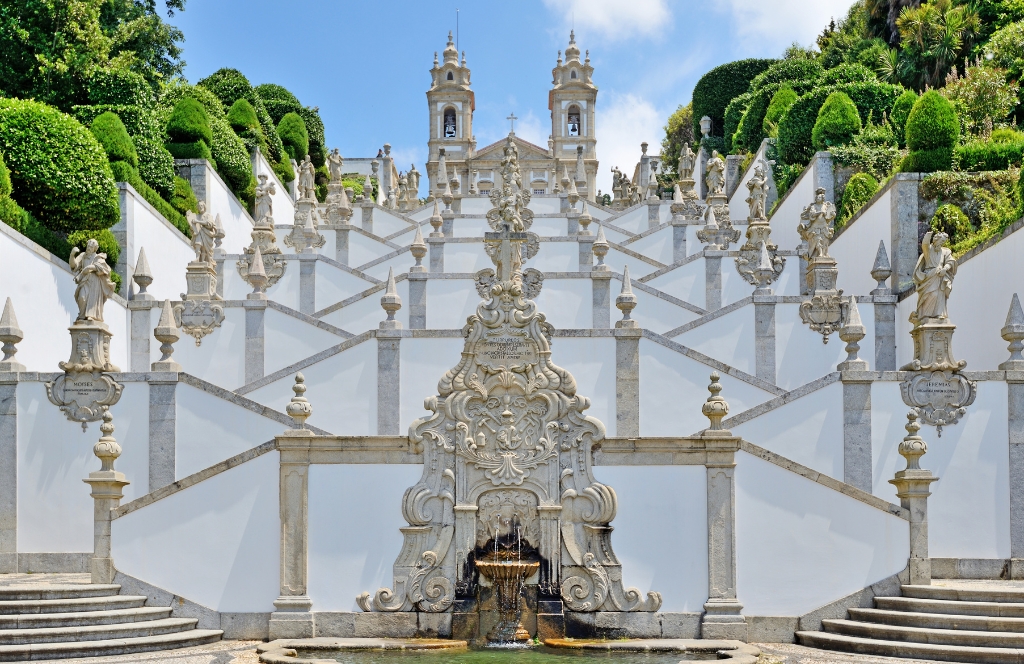
Braga, located in the north of Portugal, is one of the oldest cities in the country and is known for its religious history. The city has a quiet yet lively atmosphere and is particularly peaceful in March.
Braga sights
Braga Cathedral, known as Sé de Braga, is one of the oldest and most important churches in Portugal and an outstanding example of Romanesque architecture. Its history dates back to the 12th century and it has an impressive mix of Romanesque, Gothic and Baroque style elements that reflect its long and varied building history.
In addition to its religious history, Braga is also known for its soccer stadium. The Estádio Municipal de Braga, often referred to as "The Quarry Stadium", is an architecturally impressive soccer stadium. Designed by renowned architect Eduardo Souto de Moura, the stadium is characterized by its unique location, nestled between massive rock walls, and its asymmetrical design, with one side of the stadium open and offering breathtaking views of the surrounding landscape.
The Old Town of Braga is a labyrinth of narrow streets lined with baroque buildings and traditional stores, offering a glimpse into the city's rich heritage and culture. Characterized by baroque churches, colourful houses and lively squares, it is a popular meeting place for locals and tourists alike, who enjoy the atmosphere and the traditional stores and cafés.
Cultural events and gastronomy
Every year at Easter, Braga hosts one of Portugal's biggest religious celebrations, the Semana Santa, an impressive procession through the city. The local restaurants offer an excellent opportunity to sample northern Portuguese cuisine, known for its hearty dishes and excellent wines.
4. Porto - the charming coastal city
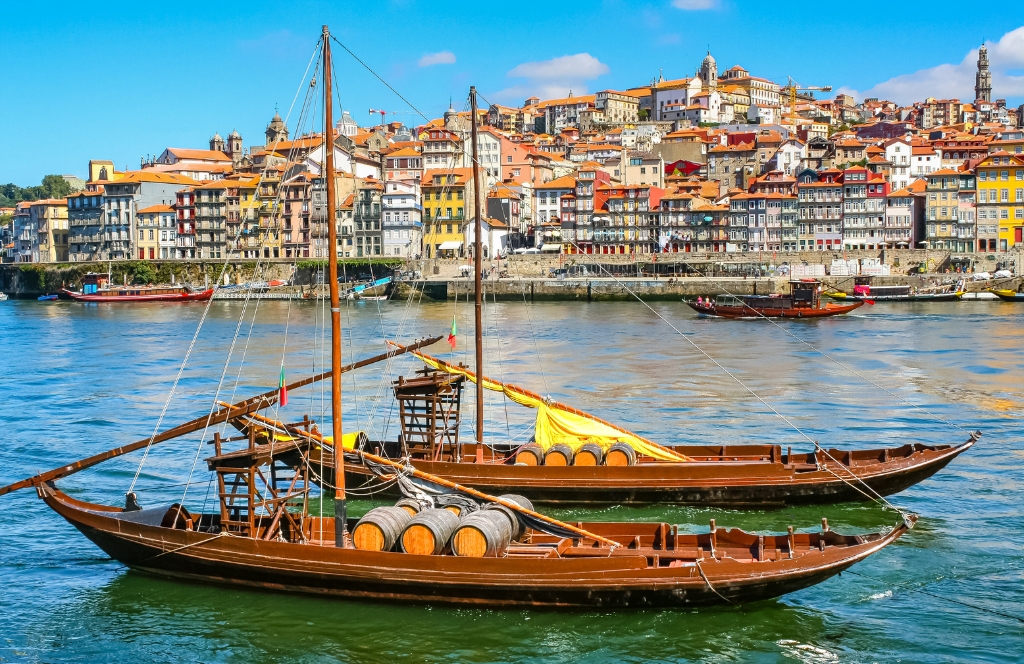
Porto, known for its port wine production, is a city full of character. It is located on the north bank of the Douro River in the northwest of the country. The old town of Ribeira, which lies on the banks of the Douro, is a UNESCO World Heritage Site and fascinates with its colorful houses and lively hustle and bustle.
Porto, known for its Port wine production, is a city full of character. The old town of Ribeira, which lies on the banks of the Douro, is a UNESCO World Heritage Site and fascinates with its colorful houses and lively hustle and bustle. The picturesque, winding streets lead past traditional fado bars, where the yearning sounds of the Portuguese guitar fill the night air.
Towering high above the city is the impressive Dom Luis I Bridge, a masterpiece of engineering that offers breathtaking views of the rooftops of Porto and the glistening waves of the Douro.
Wine and architecture
A visit to one of the many port wine cellars to taste the region's famous wine is a must. The impressive Ponte de Dom Luís I bridge offers spectacular views over the city and the river. In the historic wine cellars of Vila Nova de Gaia, located directly opposite the old town on the southern bank of the river, you can immerse yourself in the secrets of port wine production and taste fine wines.
Culture and art
Porto is also a center for art and culture, with several museums and galleries showcasing contemporary and traditional works. In March, the city is less crowded, giving visitors the opportunity to experience culture at their leisure.
Must-see's in Porto:
- Torre dos Clérigos: This baroque bell tower offers one of the best views over the city from its top. The climb up the narrow spiral staircase is rewarded with a panorama that is second to none.</li
- Livraria Lello: Often described as one of the most beautiful bookshops in the world, it impresses with its neo-Gothic façade and stunning interior with a curved wooden staircase and stained glass windows.
- Palácio da Bolsa: A neoclassical masterpiece known for its magnificent Arab Hall, which impresses with its exquisite decoration and detailed wood carvings.
- São Francisco Church: This church is famous for its opulent Baroque interior, which is overloaded with golden carvings and displays an overwhelming splendor.
Porto is also an important stop on the Caminho Português, one of the Camino de Santiago pilgrimage routes. This is why you will find many of Portugal's pilgrim hostels (albergues) here. These accommodations are specifically designed to meet the needs of pilgrims by offering affordable, comfortable accommodation in communal spaces where like-minded people can exchange ideas and share experiences from their journeys.
5th Aveiro - The Venice of Portugal
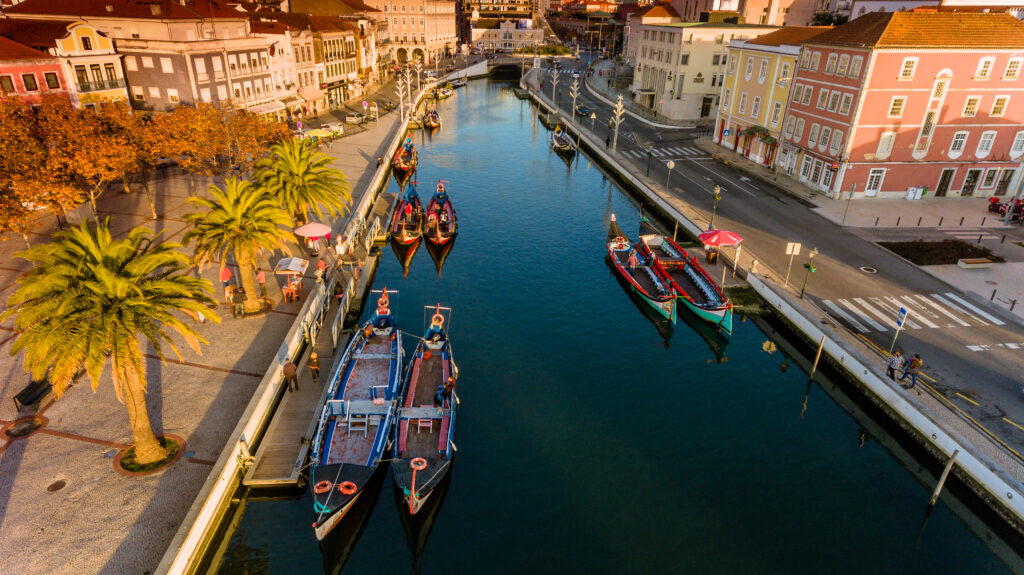
Aveiro, with its canals and colorful gondolas, is often referred to as the Venice of Portugal and is located in the central region of the country, directly on the Atlantic coast and about 75 kilometers south of Porto. The city offers a unique blend of traditional architecture and modern design, creating a fascinating atmosphere. Here, where the water characterizes the cityscape, old traditions mix with contemporary culture. The colorful moliceiros, traditional boats once used for seaweed harvesting, now glide gently with tourists through the waterways, past charming old buildings and under picturesque bridges. Aveiro's historic center, with its cobbled streets and typical Portuguese tiles, invites you to take a leisurely stroll.
Canals and Art Nouveau
A boat trip on the canals is the best way to explore the city. Aveiro is also known for its impressive Art Nouveau, or Art Nouveau architecture, which can be seen along the canals. These magnificent buildings, with their delicate decorations and floral motifs, tell of a time of cultural prosperity. The Museu de Arte Nova, housed in one such Art Nouveau building, is dedicated to the preservation and presentation of this artistic era. A walk along the Ria de Aveiro not only offers picturesque views, but also the opportunity to admire the fascinating fusion of nature and architecture that makes this city so special.
Beaches and gastronomy
Aveiro's beaches, such as Praia da Costa Nova, are known for their picturesque striped houses, painted in vibrant colors and providing a cheerful backdrop for sunny days by the Atlantic. These unique houses once served as warehouses and accommodation for fishermen and are now iconic landmarks of the region. The local cuisine, especially the seafood, is another highlight of the region. Specialties such as stews, freshly grilled fish and the famous ovos moles - sweet egg yolk pies in shapes that reference the maritime heritage - tantalize the senses and offer an authentic taste of Aveiro's rich cultural heritage.
Aveiro places of interest
Aveiro is not only known for its canals and Art Nouveau architecture, but also for its diverse sights, ranging from historic buildings to natural wonders. The Cathedral of Aveiro, also known as São Domingo's Church, dates back to the 15th century and is an impressive example of Gothic architecture. The Aveiro Museum, housed in the former Convent of Jesus, offers insights into the religious art and history of the city. For nature lovers, the natural park of the Ria de Aveiro is a must, a unique ecosystem of lagoons, canals and salt ponds that is home to a rich variety of bird species. Aveiro seamlessly combines the beauty of nature with cultural richness, offering visitors an unforgettable experience.
6th Algarve - The sun-drenched coast
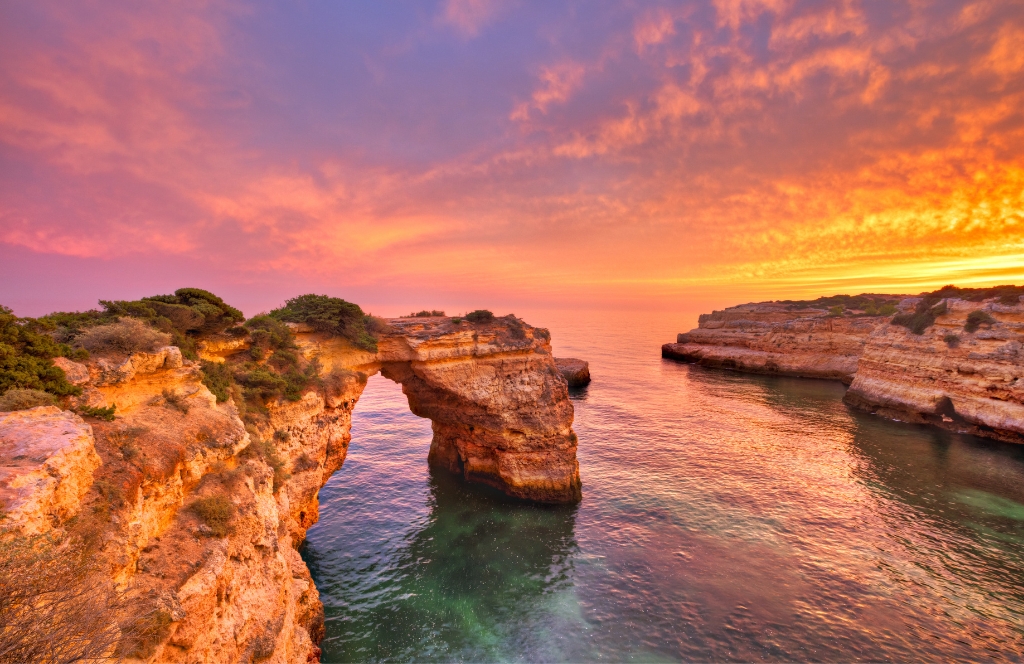
The Algarve is famous for its breathtaking beaches, picturesque rock formations and year-round mild climate, making it the perfect destination for visitors from all over the world. It is located in the southernmost part of Portugal and stretches along the coast of the Atlantic Ocean, from the Spanish border in the east to Cape São Vicente in the west, the most south-westerly point in Europe.
In March, the region comes to life, with fewer tourists and pleasant temperatures, ideal for enjoying the natural beauty and tranquillity. At this time, the landscape blossoms, covered in a carpet of wild flowers, while the almond trees are in full bloom, giving the Algarve a picturesque backdrop. The coastal towns and villages retain their traditional charm and offer a glimpse into authentic Portuguese life.
Outdoor activities
The Algarve offers a wealth of outdoor activities, including golfing on world-class golf courses that blend harmoniously with the stunning scenery. Surfing on the famous beaches, such as Praia do Amado, where the powerful waves of the Atlantic challenge both beginners and experienced surfers, is another popular activity. Or book a group surf course in Carrapateira. Kitesurfing in the idyllic Lagoon of Alvor, with its calm waters, is perfect for anyone who wants to learn the art of kitesurfing or improve their skills. Hiking and cycling along the coast or inland also offer the chance to explore the Algarve's diverse landscape, from rolling hills to hidden coves. Or how about a horseback ride on Bordeira beach at sunset?
Nature and relaxation
The region is also a paradise for nature lovers, with the Ria Formosa Nature Park, a unique coastal wetland that is home to a variety of bird species and an important habitat for many migratory bird species. The famous cliff walks along the coast, such as the path along the Seven Suspension Bridges, offer spectacular views of the endless sea and dramatic rock formations. These natural wonders provide a perfect backdrop for relaxing walks and the opportunity to discover the region's rich biodiversity.
In our opinion, the Algarve is at its most beautiful on the Lagoa Coast, where the iconic Algarve Cliffs and Caves, including the famous Benagil Cave, with its stunning natural light shows and crystal clear waters, can be found.
7th Guimarães - The cradle of Portugal
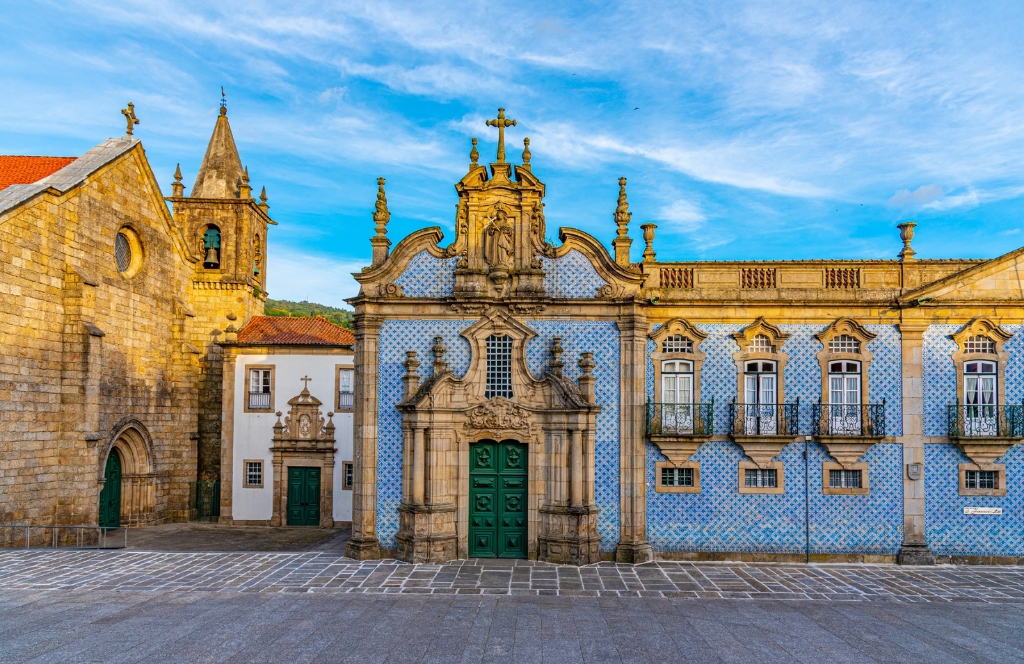
Guimarães, often referred to as the birthplace of the Portuguese nation, is a city that proudly showcases its rich history and cultural significance. The well-preserved medieval old town, with its winding streets and traditional buildings, is a UNESCO World Heritage Site and attracts visitors who want to immerse themselves in Portugal's past. Guimarães is located in the north of Portugal, in the historic Minho region, around 55 kilometers northeast of Porto. This location contributes to the rich cultural and historical texture of the city, which is deeply rooted in the traditions of the Minho region. The city offers a fascinating mix of historical monuments and vibrant culture that transports visitors back in time.
Historical sights
The heart of the city, the imposing silhouette of Guimarães Castle, das Paço dos Duques, which is considered the cradle of Portuguese identity, rises above the rooftops of the old town. It once marked the origin of the Kingdom of Portugal and played a key role in the country's history and independence. The Palace of the Dukes of Braganza, with its impressive façade and sumptuously decorated interiors, is another architectural masterpiece that reflects the splendor of times gone by and offers an insight into the life of the nobility. The historic church São Miguel do Castelo, where the first king of Portugal, Afonso Henriques, was baptized, is also an important monument that illustrates the city's deep-rooted history.
Culture and traditions
Guimarães is also a center for traditional Portuguese arts and crafts, promoting the preservation of old craft techniques. Visitors can visit local workshops where textiles, ceramics and metalwork are produced, giving them an insight into the cultural heritage of the region. The city is known for its lively events, including festivals that celebrate traditional music, dance and gastronomy. In March, the city offers a particularly tranquil atmosphere, ideal for those who want to enjoy the history and culture of Portugal away from the hustle and bustle of the high season.
Which destination do you choose?
Each of these underrated destinations in Portugal offers a unique experience in March, from historic cities to breathtaking coastal landscapes. Whether you're looking for culture, history, nature or just relaxation, Portugal has something for everyone in March. Still looking for the best travel gift? Give your loved ones an airline gift certificate from Flightgift for their birthday or anniversary and treat them to a trip to Portugal this spring.

